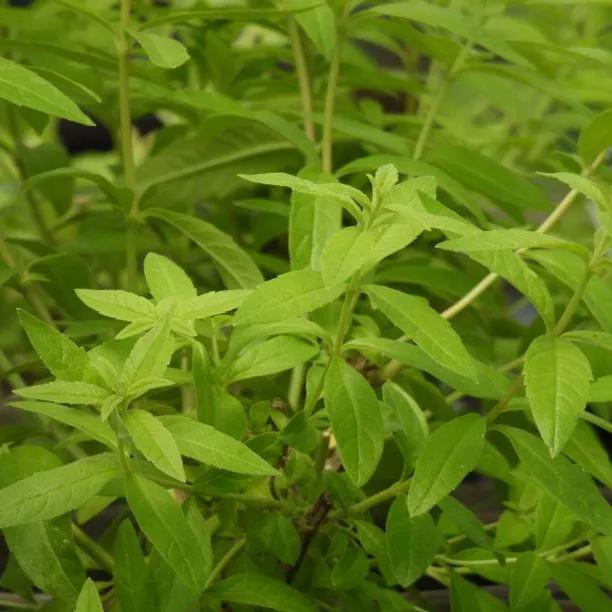Lemon Verbena Plants
The details
Aloysia triphylla
- Height x Spread: 1-3m x 2m
- Colour: light green, lance-like foliage, white flowers
- Flowers: early summer
- Uses: culinary, perfume
- Taste: lemony/citronella
- Harvest: leaves summer/ autumn
- Life: half-hardy, deciduous perennial
Recommended extras
Description
Aloysia triphylla, Lemon Verbana Plants. p9 or 1 Litre Pots
Lemon verbena is the best known and most powerful of the lemon scented herbs. It grows into a reasonable sized shrub given the right conditions and is covered in long, lance shaped rough leaves that exude a fantastic lemony/citronella/cologne type smell. The flowers are tiny, insignificant and white, appearing in the summer with a small lilac tinge, but you buy the plant for its perfumed leaves. It can have a slightly untidy habit, so it needs trimming into shape at the end of the season and a tiny prune in spring to get it going.
For similar smaller, less pungent but still gorgeous herbs, have a look at lemon thyme, which adds zing to savoury and sweet dishes, and lemon balm, which makes a good but less citrusy tea.
Browse all of our herbs.
Features
- Height: 1-3 m
- Spread: up to 2m
- Colour: light green, lance-like foliage, tiny white flowers with a lilac tinge
- Flowers: early summer
- Uses: culinary, perfume
- Taste: lemony/citronella like
- Spacing: 1 m
- Harvest: leaves through summer and autumn
- Life: half-hardy, deciduous perennial
Growing Lemon Verbena
If you look after your lemon verbena it will last for years. You need to protect it from frost in winter, either by planting it somewhere extremely sheltered, knowing you'll have to envelop it in fleece at the forecast of frost (especially for the first few years, older plants are a bit tougher), or by planting it in a large pot with a good bark, grit and peat-free mix of compost and moving it into shelter over winter.
In the second year, be patient because it often takes a long time for it to spurt into growth. To encourage it, give it a little trim in spring with a spray of warm water. Trim again after flowering, and feed it.
In autumn cut it back to shape, but not hard.
The leaves are easily harvested throughout the summer by breaking off a small branch and stripping the leaves from it.
A few crushed in a mug of hot water make an enormously refreshing tea which also has mild sedative properties. The leaves can be used to flavour syrups to poach fruit, in sorbets and ice creams and can be dried for use in the winter. You can use the leaves to put into linen sachets to scent linen cupboards and to add to pot-pourris.
Did You Know?
Previously classified as Aloysia citriodora, it originates in Chile and was imported to Europe by the Spanish for use in the perfume industry, arriving in the UK in 1784; the essential oil is still used in many perfumes. Its citronella type properties repel insects.


